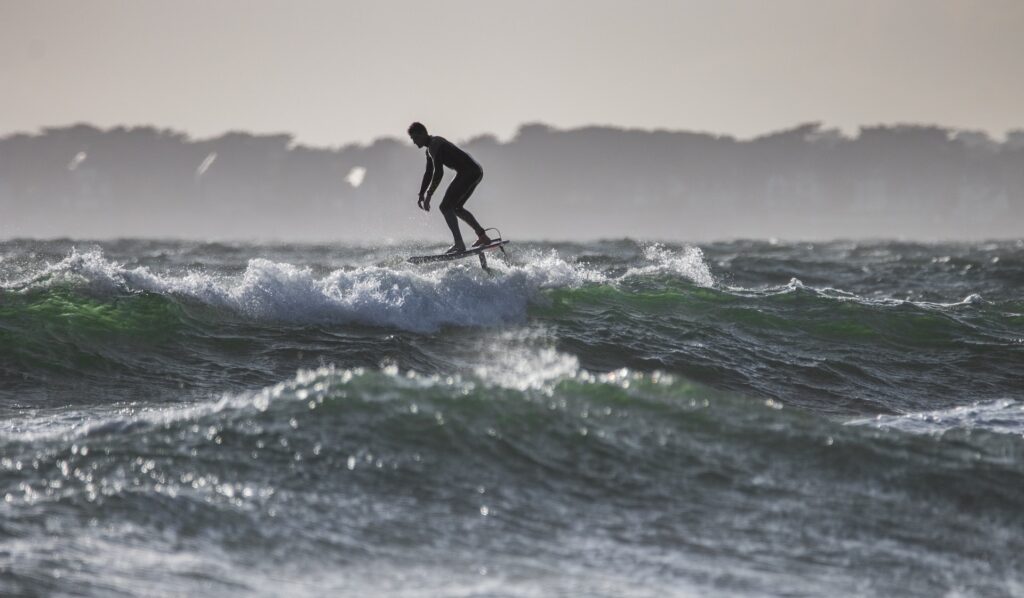What Is Foil Surfing & How Does It Work?
Patrick Kirk December 2nd, 2022 Posted In: Articles
What Is Foil Surfing?
Are you a shoreline observer or surfer who recently caught a glimpse of one of those foil board riders lately? You may have seen one of these new-age surfers hovering over the water. They’re making cutbacks at fast speeds at your local beach, lakefront, or river. It’s a new trend spreading across the globe’s coastal areas, and there are many ways to use a hydrofoil surfboard. But how do these new-age surfboards work and what is foil surfing?
How Does Hydrofoil Surfing Work?
Instead of the traditional carbon fiber or fiberglass FCS fin system that screws into a surfboard, the foil surfboard uses a hydrofoil fin design that has been one hundred years in the making. Typically used on large transport vessels to reduce fuel usage, this fin system is usually constructed of aluminum or carbon fiber materials for ultra durability. The hydrofoil fin usually extends 24 to 32 inches below the bottom of the board’s base.
What is unique about foil surfing is that you don’t necessarily need a wave to ride. Since the hydrofoil extends vertically beneath the board, the foil system is able to capture the current of the water that rests below the surface of the water. This technique allows the rider to ride the board above the surface of the water while the hydro fin does all the work beneath the surface.
The rider of a hydrofoil board can still maneuver the board with or without the wave. Foil boards can even ride boat wakes without the rope. Surfers can essentially pump their knees and “rock” the board in an up-and-down motion to begin moving on the foil board. Other watersports where riders will use a hydrofoil other than surfing will be behind a boat on a wakeboard or beneath a kite on a kiteboard. The foil surfboard is versatile for various surfing styles or leisure riding.

How is a Hydrofoil Fin Constructed?
From big wave riders to joy riders who only venture a few yards off the beach, foil surfing is easy to get the hang of once you put some hours into practice. The foil board is constructed so that it can be pushed just by the user’s body weight when shifted. The hydrofoil construction consists of a rectangular shaft that secures to the board with a bolt system.
At the bottom of the aluminum or carbon fiber fin shaft is a cross fin. This resembles an airplane wing at the forefront of the bar that attaches to the shaft. There is also a smaller rear fin that is attached at a certain angle. The foil is designed to cut through rip currents and surface chop easily.
Where Can You Foil Surf?
It is wise to know the depth of the water you are foil surfing in. If it is too shallow, the foil can drag against the bottom and stop your momentum. However, foil surfing can be done just about anywhere. As long as it is deep enough, and electric hydrofoil boards exist now that can be used with a remote for propulsion.
From your local lake to a backyard river or beachfront. Even just a minor current below the water’s surface can be harnessed for an enjoyable ride.
Gear Needed for Foil Surfing
Not only is a leash and life jacket necessary for foil surfing, but also a helmet for beginner and intermediate riders. Some pros even wear a helmet for extra precaution. Having safety covered when you are alone on the water is essential. But staying warm and comfortable while on the water is just as important. That’s why surfers should consider a nice fitted wetsuit.

